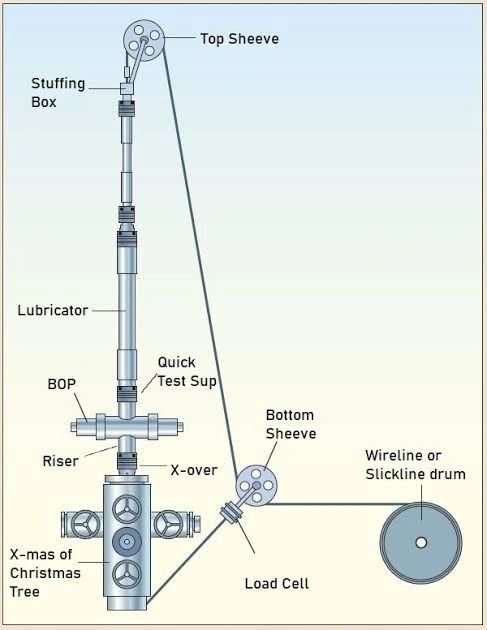
1.Wireline Logging Operations
Wireline logging is one of the most common wireline operations. It involves lowering a series of measurement tools into the wellbore to gather data about the geological formations and fluid characteristics.
Types of Wireline Logging Tools:
Gamma Ray Tools: Measure natural radiation emitted by the formation to identify rock types and stratigraphy.
Neutron and Density Tools: Measure porosity by detecting hydrogen atoms (neutron) and electron density (density tool).
Acoustic Tools: Assess formation properties, such as porosity and lithology, by sending sound waves through the formation.
Temperature and Pressure Sensors: Record temperature and pressure at different depths, providing data on reservoir conditions.
Wireline logging is essential for determining key reservoir properties such as porosity, permeability, and fluid saturation, which are critical for making decisions about drilling, completion, and production strategies.
2.Slickline Operations
Slickline operations involve the use of a thin, unarmored wire to lower and retrieve various mechanical tools and devices to and from the wellbore. Unlike wireline logging, which focuses on data acquisition, slickline operations are used for well maintenance, equipment retrieval, and remedial actions in production wells.
Common Slickline Tools and Functions:
Plugs: Used to isolate sections of the wellbore for pressure control or zonal isolation.
Packer Tools: Used to seal off sections of the wellbore to isolate production zones or stop fluid migration.
Valves: Installed in the wellbore to control the flow of fluids or gases.
Bridge Plugs: Used to block the flow of fluids in the well, typically for well abandonment or temporary isolation.
Fishing Tools: Employed to retrieve lost or stuck equipment from the wellbore.
Sample Chambers: Retrieve fluid or gas samples from the formation for analysis.
Slickline operations are typically used to perform interventions that maintain well integrity, control the flow of fluids, and support reservoir management activities.
3.Electric Line (E-Line) Operations
Electric line operations, also known as e-line, combine the functionality of wireline with the ability to send electrical signals through the wire, enabling the operation of downhole tools that require electrical power. E-line is often used for more sophisticated operations like wireline logging, wellbore monitoring, and running tools such as perforating guns.
